Pleistocene
The Pleistocene is a geological epoch that lasted from about 2.6 million to 11,700 years ago. It is the most recent epoch of the Quaternary period and is known for its fluctuating climate and the presence of multiple ice ages.
Key Events and Characteristics
- Glaciations: The Pleistocene is characterized by several ice ages, during which large parts of the Earth were covered by ice sheets.
- Fluctuating Climate: The climate during the Pleistocene was marked by repeated cycles of glacial and interglacial periods, leading to significant changes in the distribution of flora and fauna.
- Megafauna: The Pleistocene was home to a variety of large mammals, often referred to as "megafauna," including mammoths, mastodons, saber-toothed cats, and giant ground sloths.
- Early Humans: The Pleistocene is also significant for the emergence and spread of early human species, such as Homo erectus and Homo sapiens, across different parts of the world.
Study Guide
When studying the Pleistocene, it's important to focus on the following key areas:
- Understanding the concept of glaciations and their impact on the Earth's surface.
- Exploring the geological and climatic events that occurred during the Pleistocene, including interglacial periods and their effects on ecosystems.
- Examining the characteristics of the megafauna that lived during the Pleistocene and the factors that led to their extinction.
- Investigating the migration patterns and adaptations of early human species during the Pleistocene.
Additionally, it can be helpful to study specific examples of Pleistocene fossils, geological formations, and climate data to gain a more comprehensive understanding of this epoch.
.◂Science Worksheets and Study Guides Seventh Grade. Earthquakes
Study Guide Earthquakes
Earthquakes  Activity Lesson
Activity Lesson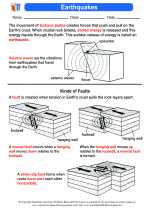 Earthquakes
Earthquakes  Worksheet/Answer key
Worksheet/Answer key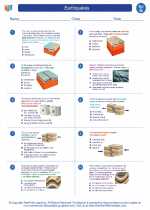 Earthquakes
Earthquakes  Worksheet/Answer key
Worksheet/Answer key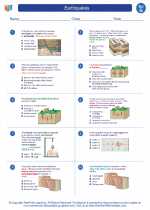 Earthquakes
Earthquakes  Worksheet/Answer key
Worksheet/Answer key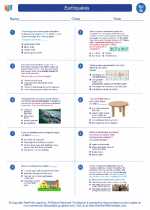 Earthquakes
Earthquakes  Worksheet/Answer key
Worksheet/Answer key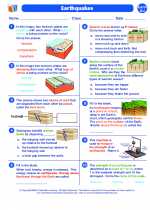 Earthquakes
Earthquakes  Worksheet/Answer key
Worksheet/Answer key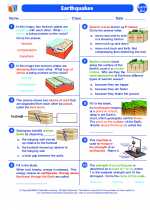 Earthquakes
Earthquakes  Vocabulary/Answer key
Vocabulary/Answer key Earthquakes
Earthquakes  Vocabulary/Answer key
Vocabulary/Answer key Earthquakes
Earthquakes  Vocabulary/Answer key
Vocabulary/Answer key Earthquakes
Earthquakes  Vocabulary/Answer key
Vocabulary/Answer key Earthquakes
Earthquakes  Vocabulary/Answer key
Vocabulary/Answer key Earthquakes
Earthquakes  Vocabulary/Answer key
Vocabulary/Answer key Earthquakes
Earthquakes  Vocabulary/Answer key
Vocabulary/Answer key Earthquakes
Earthquakes 

 Activity Lesson
Activity Lesson
 Worksheet/Answer key
Worksheet/Answer key
 Worksheet/Answer key
Worksheet/Answer key
 Worksheet/Answer key
Worksheet/Answer key
 Worksheet/Answer key
Worksheet/Answer key
 Worksheet/Answer key
Worksheet/Answer key
 Vocabulary/Answer key
Vocabulary/Answer key
 Vocabulary/Answer key
Vocabulary/Answer key
 Vocabulary/Answer key
Vocabulary/Answer key
 Vocabulary/Answer key
Vocabulary/Answer key
 Vocabulary/Answer key
Vocabulary/Answer key
 Vocabulary/Answer key
Vocabulary/Answer key
 Vocabulary/Answer key
Vocabulary/Answer key
